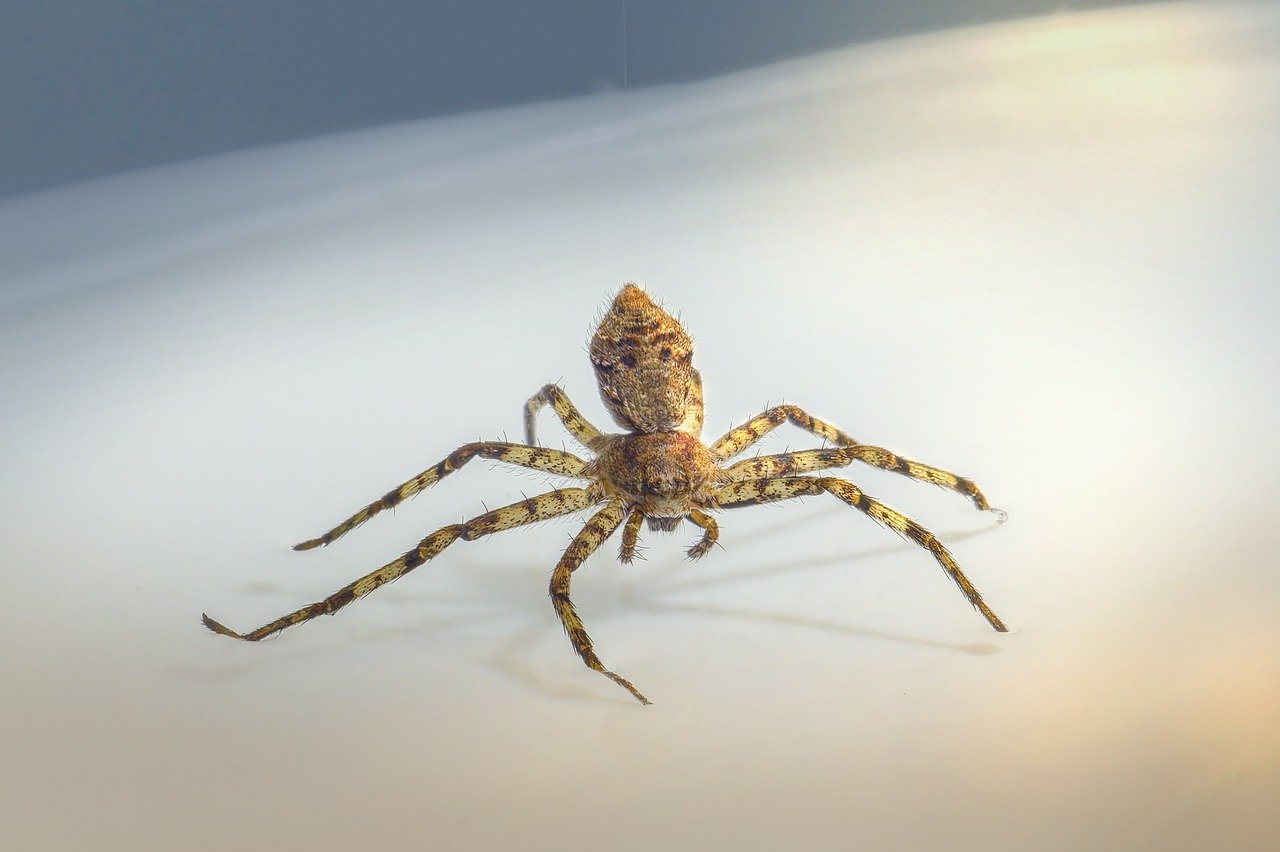The Lichen Running Spider (Philodromus margaritatus) is a small and distinctive spider belonging to the family Philodromidae. This species is known for its unique appearance and behavior, which are well-adapted to its lichen-covered habitats.
Description
- Appearance:
- Size: The Lichen Running Spider is relatively small, with a body length of approximately 3-6 millimeters (0.12-0.24 inches).
- Coloration:
- Body: The spider’s coloration is generally pale or light brown, often with patterns that blend well with its surroundings. The color and patterning help it camouflage effectively among lichen and other types of vegetation.
- Legs: The legs are long and slender, often showing slight banding or patterns that enhance camouflage.
- Eyes: It has eight eyes arranged in two rows, typical of the Philodromidae family, which provides it with a wide field of vision.
Habitat
- Distribution: The Lichen Running Spider is found across parts of Europe and Asia. It is commonly encountered in temperate regions.
- Preferred Environment: It prefers habitats with abundant lichen, such as on tree trunks, rocks, and walls. It can also be found in areas with dense vegetation where lichen and moss are present.
Behavior and Ecology
- Hunting and Movement:
- Running Behavior: Unlike web-building spiders, the Lichen Running Spider is an active hunter. It actively searches for prey rather than waiting in a web.
- Camouflage: Its coloration and patterns help it blend into lichen-covered surfaces, making it less visible to both predators and prey.
- Diet:
- Prey: The spider primarily feeds on small insects and other arthropods that it encounters while exploring its habitat. Common prey includes small flies, ants, and mites.
- Hunting Strategy: It uses its speed and agility to capture prey, often relying on quick movements to ambush and subdue its targets.
- Reproduction:
- Eggs: The female spider lays eggs in a silk sac, which is often hidden among lichen or other vegetation.
- Development: The eggs hatch into spiderlings, which are small and initially well-camouflaged. They undergo several molts as they grow into adults.
Conservation
- Status: The Lichen Running Spider is generally not considered endangered. It is adapted to specific habitats where lichen is abundant and is commonly found in such environments.
- Conservation Efforts: Efforts to preserve habitats with lichen and moss are beneficial for maintaining healthy populations of this species. Reducing habitat destruction and pollution also helps protect their natural environment.
Observing Lichen Running Spiders
- Best Times: They can be observed throughout the year, although they may be more active during the warmer months when their prey is more abundant.
- Watching Tips: Look for them on lichen-covered surfaces such as tree trunks, rocks, and garden walls. Their excellent camouflage can make them difficult to spot, so careful observation and patience are key.
Interesting Facts
- Camouflage: The spider’s ability to blend into its lichen-covered environment helps it avoid predators and surprise its prey.
- Behavior: Its running behavior and lack of web-building are characteristic of the Philodromidae family, which includes various species that are active hunters.
Summary
The Lichen Running Spider (Philodromus margaritatus) is a small, agile spider known for its pale coloration and effective camouflage among lichen. Found in Europe and Asia, it inhabits lichen-covered surfaces and actively hunts small arthropods. Its behavior and appearance are well-adapted to its environment, making it a fascinating example of camouflage and hunting strategy in spiders.d the importance of conserving natural environments.
Estonia’s diverse ecosystems, including forests, meadows, wetlands, and coastal areas, provide habitats for a variety of spider species. Here are some notable spiders you might encounter in Estonia:
Common Spiders:
- European Garden Spider (Araneus diadematus):
- Description: Known for its large, circular webs and distinctive white cross pattern on its abdomen.
- Habitat: Gardens, woodlands, and meadows.
- Common House Spider (Parasteatoda tepidariorum):
- Description: Builds irregular, messy webs in corners and crevices.
- Habitat: Inside homes, outbuildings.
- Norway Spider (Tegenaria domestica):
- Description: Creates funnel-shaped webs in corners and undisturbed areas.
- Habitat: Homes, barns, and forested areas.
- European Wolf Spider (Pardosa spp.):
- Description: Ground-dwelling spider with a wolf-like hunting style.
- Habitat: Meadows, grasslands, and forest floors.
Forest and Woodland Spiders:
- Crab Spider (Thomisidae):
- Description: Recognizable by their crab-like appearance, often found on flowers where they ambush prey.
- Habitat: Forest edges, meadows, and gardens.
- Jumping Spiders (Salticidae):
- Description: Small, agile hunters with large, forward-facing eyes.
- Habitat: Various environments including leaf litter, tree bark, and walls.
Specialized Spiders:
- Money Spider (Linyphiidae):
- Description: Tiny spiders that create small, intricate webs, often found in leaf litter.
- Habitat: Grasslands, woodlands, and meadows.
- Sheet Weavers (Linyphiidae):
- Description: Known for their small, horizontal sheet-like webs.
- Habitat: Grass, shrubs, and low vegetation.
Wetland and Aquatic Spiders:
- Water Spider (Argyroneta aquatica):
- Description: This spider creates a web underwater, using an air bubble to breathe.
- Habitat: Ponds, lakes, and slow-moving waters.
- Fishing Spider (Dolomedes fimbriatus):
- Description: Known for its ability to walk on water and hunt aquatic insects.
- Habitat: Near water bodies like ponds and marshes.
Rare or Less Common Spiders:
- Yellow Sac Spider (Cheiracanthium punctorium):
- Description: Notable for its bright yellow coloration and sac-like web.
- Habitat: Often found in gardens and grasslands.
- Garden Spider (Araneidae):
- Description: Various species that build orb-shaped webs in gardens.
- Habitat: Gardens and wooded areas.
Estonia’s spider fauna reflects its diverse habitats, with species adapted to different ecological niches. Whether in the forest, garden, or near water, there’s a rich variety of spiders to discover.
Views: 3710
Subscribe to the newsletter:
